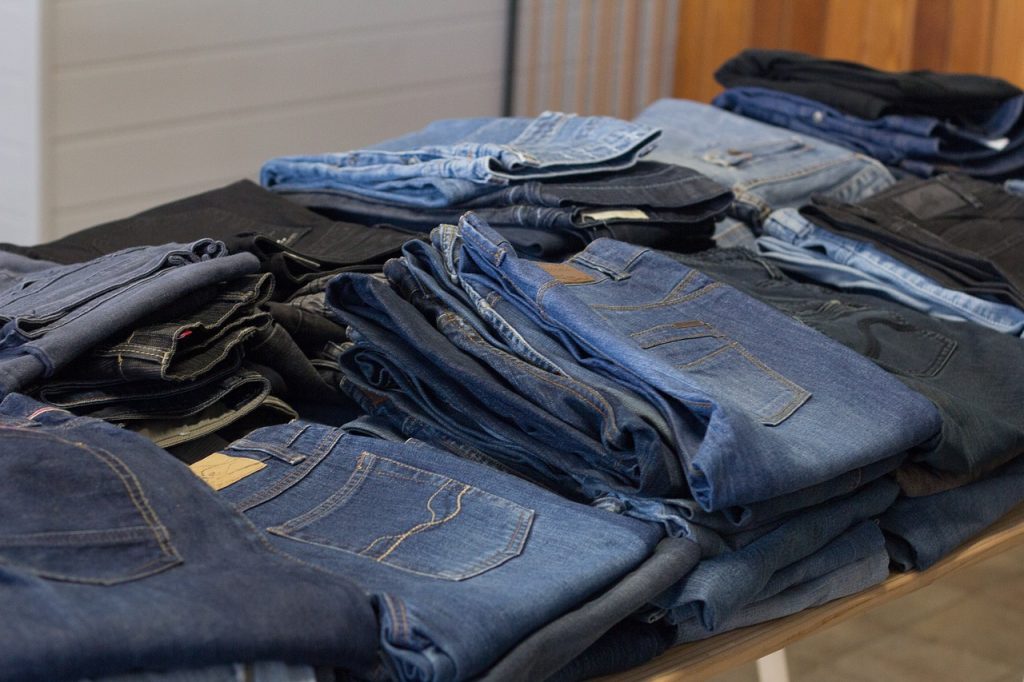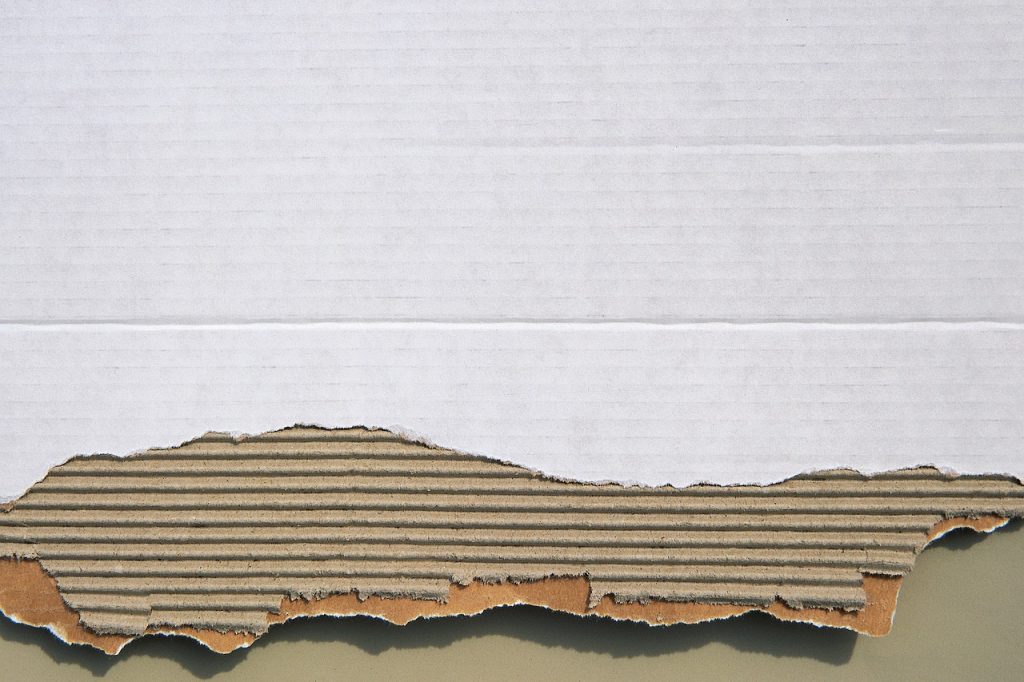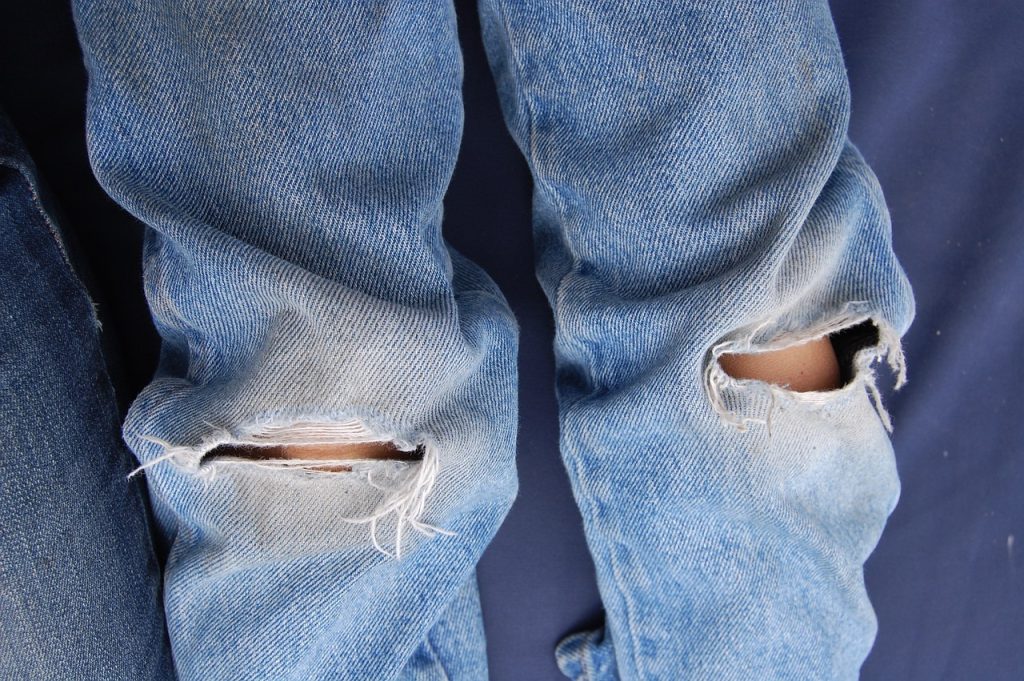- Ensure jeans are clean by washing them thoroughly.
- Decide on the recycling method: donate, return to a recycling program, or repurpose.
- For repurposing, consider no-sew tutorials or upcycling into unique fashion pieces or home decor.
- Research and locate nearby recycling centers or denim recycling programs.
- Always check the denim content label before recycling; higher denim content is preferable.
- Contribute to in-store recycling programs that offer incentives for denim donations.
Step by Step Guide to Denim Recycling: How to Recycle Your Denim Jeans
If you’re wondering how to recycle jeans, then you’ve come to the right place. This denim recycling guide provides an eco-friendly answer to what to do with your worn denim. Many of us have piles of blue jeans stashed away that we’ve either outgrown, worn out, or simply don’t fancy anymore. Instead of letting them take up space, or even worse discarding them in the bin, why not recycle them? This step-by-step guide on how to recycle jeans will introduce a sustainable way to declutter your wardrobe.
Denim recycling is an easy process, and it’s a green and sustainable way to care for our clothing and the environment. In fact, many leading denim brands have recycling programs where you can return your worn denim jeans. Such initiatives not only contribute to recycling efforts, but also have the potential to make a significant impact on how we perceive clothing in terms of use and reuse.
Let’s get started! The first step on how to recycle jeans is to ensure they’re clean. Whether they’re heavily distressed blue jeans or slightly worn denim pants, wash them thoroughly. Next, decide how you want to recycle your jeans. You may choose to donate them, return them to a recycling program, or repurpose them into fresh, trendy outfits or home decor items. You don’t necessarily have to be a whiz with a sewing machine to do this; plenty of no-sew tutorials for recycled jeans are available online.
Alternatively, you could consider upcycling your jeans. Rather than remain as waste, your old jeans could become a unique fashion piece or a creative project. It’s the perfect opportunity to get crafty and make some handy reusable items like tote bags, placemats or even a denim quilt.
Besides being a way to declutter, recycling your jeans is both green and sustainable. So let’s recycle, recycle, and recycle some more, and contribute to more sustainable fashion practices. Whether it’s a single pair of jeans or a wardrobe full of worn denim, there’s a solution for recycling your denim and it’s easier than you think. Remember, each pair of jeans recycled is a step closer to a sustainable, eco-conscious world.
Recycle Denim: Key Ins and Outs for Effective Jeans Recycling
Jeans recycling is gaining popularity and it’s one of the best ways to go green. However, to recycle denim effectively, it’s essential to understand the key ins and outs of denim recycling. The process seems simple, but there are specific ways to recycle denim that ensure it’s recycled properly and sustainably. Green enthusiasts, take heart! This guide is for you.
Recycling jeans starts with making the decision to not throw away your old denim. This is an easy and practical way to promote sustainable living. Once you’ve got your denim ready for recycling, the next step is to find a suitable place to recycle them. Many cities have recycling centers where you can drop off used denim. Some clothing brands even have in-store recycling programs where you can bring in old jeans, which they then recycle into new products.
Maintain the green initiative by ensuring to recycle every bit of denim. Even if you think those ripped jeans are not worth recycling, don’t throw them out! Every bit of denim counts, even the smallest piece can be recycled into something useful. Recycling denim not only helps save the environment but it’s also a cost-effective way to generate new products. Whether it’s denim insulation or recycled denim home goods, there’s always a sustainable use for recycled denim.
Also, while you recycle, remember to keep an eye out for labels. Most jeans have a small label that displays the percentage of denim they contain. The higher the denim content, the better it is for recycling. Some jeans have a blend of materials that might not be as sustainable as pure denim.
You need also to follow and take note of the regions where recycling denim is gathered. Not every recycling center or clothing brand accepts denim. Do your research and you will find ways to recycle your denim in the most effective way. There are plenty of resources online that can help you locate the closest recycling center or denim recycling program.
Stay green and recycle. That’s the most sustainable and cost-effective way to get rid of worn-out jeans. Remember, every time you recycle your denim, you’re taking a step towards sustainable living, and that’s a step worth taking.
Cotton and Denim: Exploring the Connection in the Context of Recycling Jeans
As we delve into the fascinating world of denim recycling, an important element to consider is cotton and its connection with jeans. Cotton is fundamental to denim’s fabric, providing its distinctive strength and comfort. A pair of blue jeans isn’t merely a piece of clothing; it’s a blend of style and sustainability. So, let’s explore this unique relationship in the context of recycling.
Cotton is a natural, renewable resource which is biodegradable. It plays a vital role when we decide to recycle denim. Blue jeans, the quintessential denim garment, are predominantly made of cotton. This means that, in theory, they should decompose naturally over time. However, it’s not that simple. The denim used in jeans often incorporates synthetic fibers, dyes, and treatments, complicating the recycling process.
Recycling jeans demands a further understanding of their content. While jeans are made of cotton, they undergo processes that reduce their recyclability. Denim, with its rugged, hard-wearing characteristics, is often treated with chemicals to make it durable. Yet, these chemicals can impair the decomposition process. Cotton and denim, though clearly linked, encounter different challenges during recycling due to these treatments.
Nevertheless, there exist certain methods and techniques for effectively recycling this denim material. Denim recycling can yield new goods, from insulation to paper. It’s a significant component of reducing waste and promoting sustainability. Recycle your jeans; be part of a larger environmental cause. Denim recycling may not be straightforward, but awareness and responsibility make it worthwhile.
Embrace the connection between cotton, denim, and blue jeans. Understand the role they play in our wardrobes and our world. Comprehend the challenges their recycling present, and the gains it can yield. One can’t deny the importance of cotton in making denim, and subsequently, jeans. With a bit more understanding, we can contribute to a more sustainable world by recycling our denim jeans effectively.
Remember, when you recycle denim, you’re not just disposing of an old piece of clothing; you’re contributing to a global attempt to live sustainably. Let’s collectively utilize cotton and denim to their full potential and help protect the environment by recycling those old jeans.
Advocating Jeans Recycling: Shops Offering Recycle Incentives
Embracing the green culture extends beyond just our immediate environments. It is an action that involves taking responsibility for every single product we use, especially when they’re worn out. One way to do this is to learn how to recycle jeans. With jeans, jeans, jeans running in constant demand, their production can cause significant stress on our environment; hence, denim recycling is something we should all consider. To advance this course, several stores have started offering incentives to encourage people to recycle denim.
Let’s take a closer look into the world of jeans. Jeans are comfortable, reliable and versatile. They are a go-to choice for many across the globe, and they don’t go out of fashion. However, this massive consumption of jeans means we constantly have to dispose of worn denim, which can negatively affect our environment if not done correctly. So, how can you recycle your jeans? It’s simple. When your jeans are worn out or you’ve simply outgrown them, don’t just toss them in the trash. Instead, look for stores near you that accept used denim and offer incentives for donations.
Several stores are leading the push for jeans recycling. These stores accept worn-out jeans and responsibly recycle the material, reducing waste and conserving resources for future generations. To encourage more people to join the recycling train, these shops offer incentives such as coupons or money. They follow stringent recycling procedures to ensure the process is as eco-friendly as possible. This way, you’re not just doing your part to keep the environment clean but also getting rewarded for it.
In essence, denim recycling is a way to turn your old, worn jeans into something new and sustainable. It’s a way to give your old denim a second chance at life, rather than ending up in a landfill. So, don’t just dispose of your jeans. Learn how to recycle jeans and make it habitual to donate your used denim at the nearest recycling store. It’s a way to be green, best of all, it’s something that you can make, make, and continually make a habit of. In a world where we’re becoming increasingly conscious of our environmental impact, this is a small step that can make a large difference.
Introduction to Leading Denim Recycling Programs
For many, a pair of denim jeans represents comfort, style and durability. When these jeans have seen better days, we often don’t know what to do with them. Don’t toss them out! Come and learn how to recycle jeans with our introduction to leading denim recycling programs.
Denim recycling doesn’t just reduce landfill waste; it also provides a host of other benefits. One significant reason to recycle jeans is the close connection between cotton and denim. By recycling old jeans, we save the enormous water and energy resources needed to produce new cotton and denim clothes. Denim recycling can thus play a critical role in sustainable fashion.
Over the past years, both consumers and retailers have become more conscious of the need for sustainable practices. This has sparked an increase in shops offering incentives like discounts to encourage denim recycling. And itching to know how to recycle jeans in such shops? It’s as easy as bringing your pair of jeans into the shop and swapping it for a discount on your next purchase. With such incentives, it’s a win-win solution for your wallet and the environment.
Now that you’re familiar with the ins and outs of denim recycling, there’s no reason not to recycle that old pair of jeans from ages ago. With denim recycling, you’re not just doing your part in reducing waste, but also contributing to a sustainable wardrobe and a greener planet. So, visit your nearest shop with a denim recycling program and recycle those jeans today. We hope our guide to jeans recycling has made the process easier and more appealing to you.
From Jeans to Cotton: The Importance and Process of Denim Recycling
When it comes to reducing waste and preserving our natural resources, recycling is an exceptional way we make significant impact. And, did you know this extends to our blue jeans too? Recycling jeans, especially denim, can be a great contribution to ecological balance. Not only are jeans a staple item in our wardrobes, but they’re a resource waiting to be recycled – all those pairs of jeans, just think about it. Denim recycling is crucial for several reasons.
First, the large amount of water and other resources used to produce cotton and make denim fabric is substantial. By recycling old denim jeans, we can reduce the need for new cotton production, and this can lead to savings in those resources. Furthermore, when old jeans are transformed back into raw cotton, this recycled product can be used in a plethora of ways, from home insulation to high-quality paper. It’s an effective way of giving new life to something that may have otherwise ended up in a landfill.
Now, the recycling process is not as complex as it might seem. Firstly, the jeans are collected and sorted. This sorting is typically based on the jeans’ condition and color. Once the jeans are sorted, they go through a shredding process where they are broken down into smaller pieces. Then, these shredded jeans are subjected to a series of cleaning processes to remove any unnecessary components like zippers or buttons. This is then followed by a process where shredded jeans are converted back to cotton, and voila, your old jeans have now transformed into a recyclable material.
Denim recycling programs play a pivotal role in this endeavor. They make it easy and convenient for people to recycle their jeans. From drop off points, like shops offering recycle incentives, to pick up facilities, leading denim recycling programs are working tirelessly to make recycling denim more mainstream.
In a nutshell, we all should advocate jeans recycling. So, next time you’re replacing your old jeans, consider recycling them into cotton. Not only will this help to conserve natural resources but it will also reduce landfill waste. Remember, every recycled pair of jeans counts.




